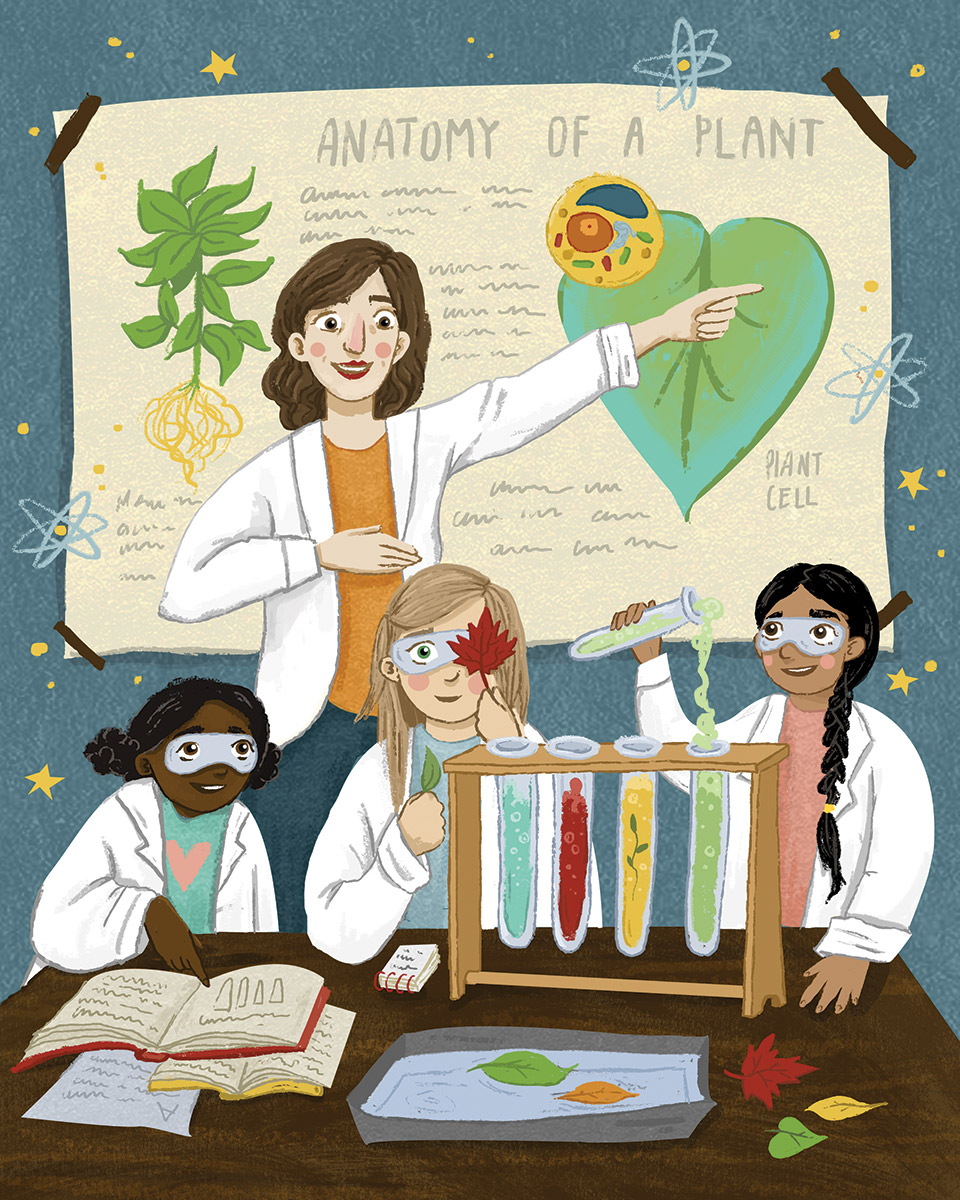Organizations like Girls Inc. seek to get younger students interested in STEM
In July of 2018, the Pledge to America’s Workers promised training-and-education opportunities for more than 1.2 million American students and workers over the next five years. More than 300 companies and organizations have committed to contributing over 12.7 million training hours and education opportunities by 2024.
The pledge came in response to what National Association of Manufacturers President and CEO Jay Timmons estimates as more than 500,000 currently unfilled manufacturing jobs in addition to 2.4 million jobs predicted to go unfilled by 2028.

Illustration by Annabelle Meszynski
In response to the pledge, Walmart alone has promised 1 million opportunities for its workers. This comes as no surprise. In the spring of 2018, Walmart made national headlines when the retailer announced it would fund degrees in business and supply chain-management for its employees. Programs such as this increase longevity of employment and improve workforce quality. The Pledge for America’s Workers begins even earlier by targeting manufacturing inclined students before they enter the workforce.
Unfortunately, manufacturing is often misunderstood by Gen-Z – Americans born after 1996. According to the Pew Research Institute, the oldest members of Gen-Z are less likely than Millenials to be in the labor force.
“Girls are conditioned to lose interest in science and math around (middle school), even though their grades are just as strong as their male peers.”
— Victoria Waterman, Girls Inc.

Illustration by Annabelle Meszynski
Whole girl philosophy
Worcester Technical High School is doing its part to ensure that a new generation of manufacturing professionals will be at the ready when the workforce turns over. Karen Pelletier of the Worcester Regional Chamber of Commerce praised the Worcester Public Schools for relaunching Night Life Continuing Education this year along with the Innovation Pathways Program for students at the comprehensive schools.
The chamber provides a strong line of communication between employers and educators.
“We have been working closely with the IPP director to align training programs with workforce needs and assist with employer partnerships for internships,” said Pelletier. “We have also been assisting the new director of Night Life to support her efforts to make sure employers are aware of this low-cost training opportunity across many industries, including manufacturing.”
Youth organizations are likewise doing their part to ensure a new generation of manufacturing professionals will be at the ready, by pioneering STEM education. Girls Inc. of Worcester serves more than 1,000 girls every year with a whole-girl philosophy designed to inspire young women to be strong, smart and bold.
Girls Inc. of Worcester prepares women to enter the STEM workforce by providing K-12 programming with demonstrated results and access to opportunities in the field.
“Our capstone program, Eureka!, places high school girls in summer externships at local manufacturing businesses such as Boston Scientific, Dell, and Saint-Gobain, who have generously opened their doors to create an introduction to manufacturing and STEM careers,” said CEO Victoria Waterman,
Focus on middle school
This is only the beginning. Waterman said every girl enrolled in Girls Inc. is engaged in some form of STEM programming; however, there is an intentional focus to capture girls before they enter middle school.
“Girls are conditioned to lose interest in science and math around that age, even though their grades are just as strong as their male peers,” said Waterman. “Girls Inc. strives to keep them engaged, expose them to the variety of careers, and build their confidence so they can stay on track academically.”
Girls Inc. has found success in combining research-based curricula, mentors, and role models from the field, in addition to training its own staff.

Illustration by Annabelle Meszynski
“Girls Inc. strives to keep them engaged, expose them to a variety of careers, and build their confidence so they can stay on track academically.”
— Victoria Waterman, Girls Inc.
“Collectively, of more than 50 high school students who have graduated from the Girls Inc. Eureka! program in the last three years, 70% selected STEM-related majors in college,” Waterman said.
Girls who participated in Eureka! were accepted at nearly 250 colleges (including seven in the Ivy League), received more than $3.5 million in scholarships (including 16 full rides), and nearly 50% were first generation in their families to go to college.
“With an R.O.I. that strong, we need to continue providing access to the girls in our community,” Waterman said.
Problems of perception may stem from the fact manufacturing hasn’t always been on the upswing. Many Gen-Xers, born between 1965 and 1980, recall entering the job market 30 years ago when, according to the Bureau of Labor Statistics, more than 5 million more manufacturing jobs existed than today.
Programs like the one at Girls Inc. will continue to alter Gen-Z’s view of sophisticated manufacturers in the fields of robotics, defense, medical equipment and space travel. ◾


